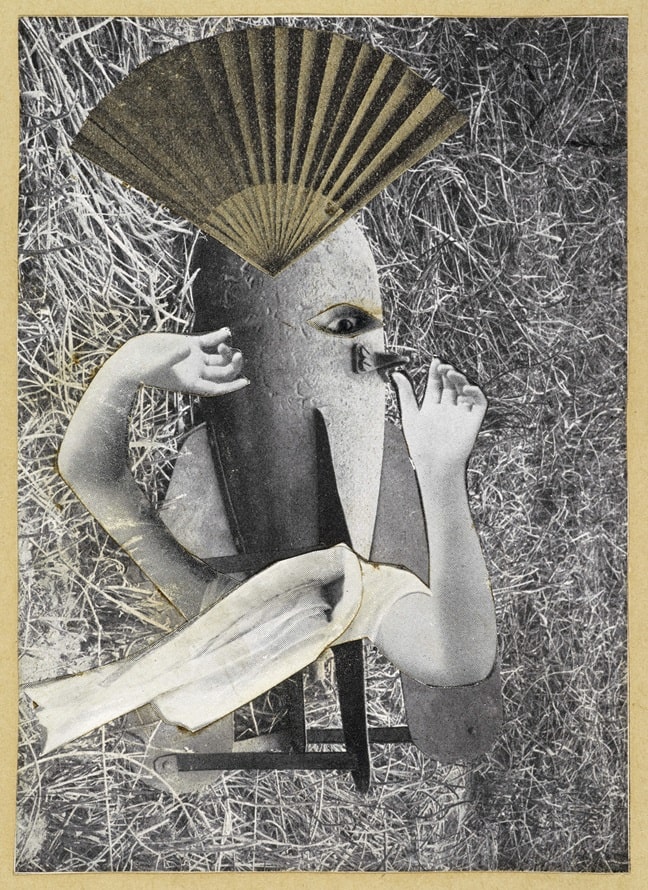Max Ernst occupies a prominent position in the art of Dadaism and Surrealism. His name stands for transgressive works that combine dream and reality. The Museum of Photography presents the exhibition “FOTOGAGA. Max Ernst and photography. A Guest in the Würth Collection” is the first to explore the points of contact between his work and photography. The exhibition runs from October 18, 2024 to April 27, 2025.
Image above: Max Ernst: Lichtrad / la roue de la lumière, aus: Histoire Naturelle, Blatt 29, 1926. Lichtdruck nach Frottage, 32,5 x 50 cm. Sammlung Würth © VG Bild-Kunst, Bonn 2024
To mark the centenary of Surrealism, the Museum of Photography is showing a representative overview of Max Ernst’s works from the Würth Collection. This will be complemented by works from the Kunstbibliothek, the Kupferstichkabinett, the Scharf-Gerstenberg Collection and the Staatsbibliothek zu Berlin, as well as other high-caliber loans from museums and private collections in France and Germany.
Max Ernst and photography – an unusual connection
The art of Max Ernst (1891-1976) emerged at a time of a new, creative approach to photography. Snapshots, scientific photographs and images of war machines not only provided him with inspiration, but also served as working material, especially for his collages. His work was significantly influenced by the technical and artistic developments in the medium of photography. He used photographic reproduction techniques to increase the visual impact of his works: enlargements made his small-format collages stand up to paintings in exhibitions. The production of photo postcards of the collages ensured that the works could be distributed quickly and easily. The inversion of the tonal values in the photogram enhanced the effect of his frottages.

Max Ernst, who surprisingly never appeared as a photographer himself, liked to pose in front of the camera, in front of renowned photographers as well as in the photo booth. Sometimes serious, sometimes a little “gaga”, the portraits illustrate not only his delight in playfulness, but also the occasionally strategic use of photography to promote his artistic agenda. The title of the exhibition “FOTOGAGA” is borrowed from a group of works by Hans Arp and Max Ernst, which they called “FATAGAGA”: the “FAbrication de TAbleaux GAsométriques Garantis (Fabrication of Guaranteed Gasometric Images)”. One of these photo collages, in which the two addressed their personal, friendly relationship, can be seen in the exhibition.
100 years of surrealism
Around 270 works are on display, mainly works on paper, but also paintings by Max Ernst as well as photographs, photograms, collages and illustrated books by his surrealist contemporaries. Although they were all explicitly not concerned with reality, but with what lies beneath, behind and in between, the still relatively new medium of photography was of great importance to many of them. Not least, they used it to make visible what remains hidden to the naked eye without technical aids: the distant, the tiny, the moving.

The works of Max Ernst are placed in the context of contemporary and historical references. A variety of surprising parallels to photographs by other artists can be discovered. The works selected for the exhibition are characterized by a love of experimentation and a creative play with chance. Their creators returned to forgotten processes from the 19th century and developed new techniques for working with light-sensitive material. Semi-automatic processes, working with found objects, combinatorics and the blurring of traces characterize Ernst’s work as well as the photographic oeuvre of many contemporaries and subsequent artists. Even 100 years after the publication of André Breton’s first surrealist manifesto on October 15, 1924, they have not lost their fascination.
Cooperation with tradition
The Staatliche Museen zu Berlin can look back on many years of cooperation with the Würth Collection. “FOTOGAGA. Max Ernst and Photography” is the fourth exhibition in a series that began in 2019/20 with ”Anthony Caro. The Last Judgement Sculpture of the Würth Collection” in the Gemäldegalerie. Also in 2021/22 were “Illustrious Guests. Treasures from the Würth Kunstkammer” at the Kunstgewerbemuseum and ”David Hockney – Landscapes in Dialogue. The ‘Four Seasons’ of the Würth Collection” were also on display in the Picture Gallery in 2022. For the exhibition at the Museum of Photography, it was possible to draw on the Würth Collection’s particularly extensive holdings of prints by Max Ernst in particular, which are now being shown in Berlin for the first time.

Events
An extensive range of guided tours and workshops invites visitors to discover the exhibition through discussion and exchange and to try out surrealist techniques for themselves. From February 2025, a series of lectures will shed light on individual aspects of the exhibition from different perspectives.
Publication accompanying the exhibition
A richly illustrated catalog will be published by Wienand Verlag in German and English with essays by Katja Böhlau, Ludger Derenthal, Michael Lailach and Jürgen Pech.
Curatorial team
The exhibition is curated by Katja Böhlau and Ludger Derenthal, Kunstbibliothek – Staatliche Museen zu Berlin.
WHEN?
Opening: Thursday, October 17, 2024, 7 pm
Exhibition dates: Friday, October 18, 2024 – Sunday, April 27, 2025
Opening hours: Tuesday, Wednesday, Friday – Sunday, 11 am – 7 pm, Thursday, 11 am – 8 pm
WHERE?
Museum für Fotografie
Stauffenbergstraße 41
10785 Berlin






